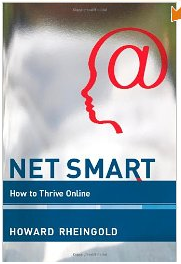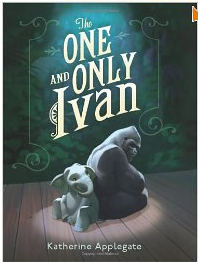So, I’ve been thinking about what makes for a productive visit for colleagues looking at 1:1 learning. I have visited four different schools this year with my colleagues. Each school has 1:1 laptop program yet there was wide variety not only in the schools but in the length of time they have been teaching and learning in this environment.
My conclusion: there is no perfect visit that fits everyone. Surprise. Just like Goldilocks, I was looking for the porridge that was “just right” for each person in my group. As the person bringing my colleagues, I was more anxious than I anticipated being. I wanted the school to look good, to show its best self, to reassure my colleagues if they needed reassuring, to inspire them if they needed inspiration, and to sing with them if they just needed a choir. Not too much, right?

Creative Commons licensed photo by Flickr user Scazon
One high school we visited was honestly a mess. They do great things at this school, and I would be thrilled to have my kids there, yet neat and tidy are not words I would use to describe it. Also, we didn’t end up seeing a lot of tech use, which was why we were there. Turned out the colleague with me didn’t need that. He valued the experience of talking to the students and other teachers. He was taking a broad view. Phew.
We also visited a school that specializes in students with learning differences. Our visit there gave my colleagues some reassurance that the laptops did not need to be out all the time, that meaningful work was happening, and that management was doable. It also gave them the idea that class size of 10 would be great. Keep dreaming, my friends!
A day long visit to a very similar school where we got to talk to lots of teachers, administrators, and tech folks gave my colleagues some perspective on the journey of change and transition. It was helpful to hear from people in a very similar school. Plus, we got to see the students in action and talk with some of them about their experience. We lucked out in terms of seeing some classes that particularly resonated with my group.
Finally, a small group went to a local high school. We were in and out quickly, which meant that it wasn’t a huge time commitment, always helpful for teachers. As we walked around, there were computers in use here and there and it just seemed to be an easy integration. Plus, we got to visit 4 different classes where technology was being used very differently. What made it so useful was that several of the uses we saw were very reasonable for my colleagues. These were uses that made sense in the classroom and which did not present an intimidating model. They were doable now! And, given the super short drive, we could go again.
In all of these examples, one of the things that was valuable was the conversation during our travel time which ranged from 8 minutes to 2 hours. Each time it gave me a chance to put into perspective some of what we had seen, explain a technical thing or two, and listen as others imagined how something they saw might translate at our school. On each visit I also go a chance to observe what grabbed each colleague’s attention so that I can personalize my support for that colleague.
So, I’m thinking about all of these visits as I think about planning more experiences like this for other colleagues. Here’s what I’ve come up with:
- If it’s not a big production with presentations etc, short and sweet is good.
- Something needs to seem doable NOW to each person in the group.
- Acknowledgment of teacher time and choice is important for folks to hear loud and clear.
- The travel time can be important talking time for the group.
- There is no perfect visit.
- I would love it if everyone got to visit somewhere.
What do you find valuable when you visit other schools?



